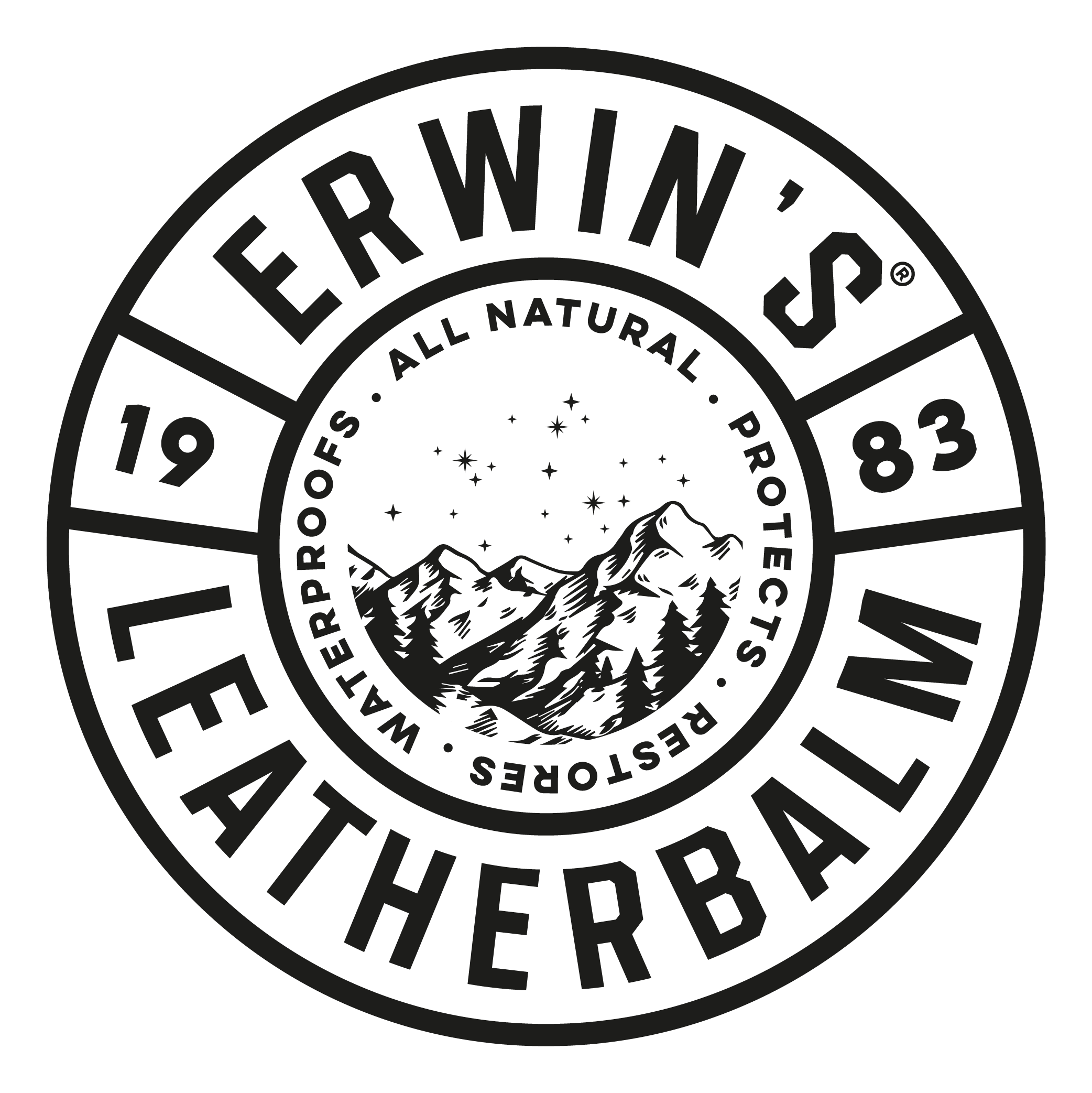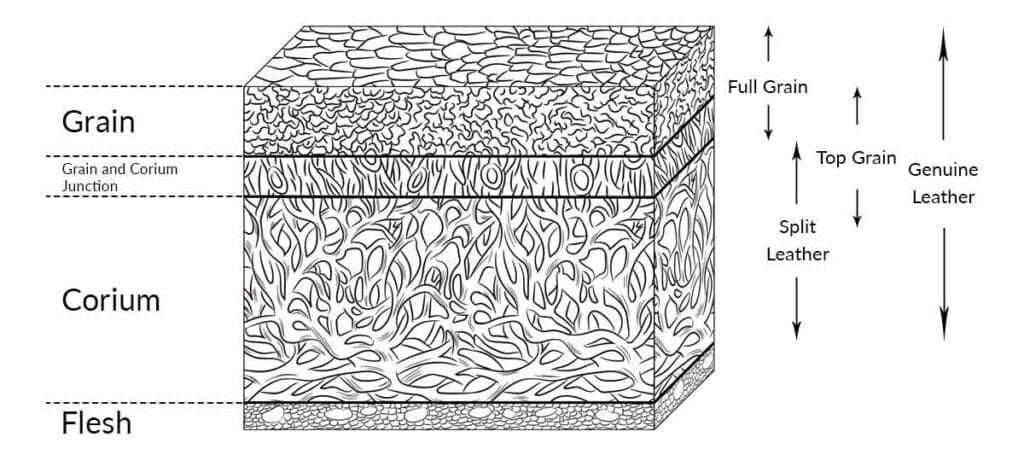Leather is a material loved by many for its flexibility and durability. It is made from tanning animal skins or hides and different animals are used to make leather. Leather has four basic grains or qualities; those are full-grain leather, top-grain leather, genuine leather, and corrected-grain leather.
1. Full-grain leather
2. Top-grain leather
3. Split-, corrected-grain & genuine leather
4. Bonded leather
1. FULL-GRAIN LEATHER IS THE BEST QUALITY
Full-grain leather is characterized by its luxurious, smooth surface and it has few, if any, flaws. It is the most popular type of leather. It has not been snuffed, sanded, or buffed to remove any natural marks or imperfections from its surface. Its fibers are stable and durable because the grain has not been removed. There is less moisture in the leather from any prolonged contact as the grain has a characteristic of breathing.
This type of leather does not wear out easily. Instead, it develops a patina, which is a thin layer that protects the leather from damage from wearing or corroding; it also gives the leather an aesthetic look. It is used in making high-quality footwear and furniture.
It has two finished product types; Aniline and semi-aniline. Aniline leather is the most desirable finish in the manufacture of leather. It is exclusively dyed using soluble dyes without covering the top with insoluble pigment or topcoat paint. Semi-aniline has a thin protective coat, which protects it from staining and wearing out.
Full-grain leather is less processed and leaves the entire or full grain of the hide intact, including natural scarring and blemishes. Full grain leather absorbs moisture and oil and, over time, will develop a wonderful patina that looks better the longer the item ages.
2. TOP-GRAIN LEATHER IS THE MOST COMMON
Top-grain leather has the second-highest leather quality of the high-end category of leather products. It is more pliable and thinner as its layer is separated away. Its surface is sanded, and a finish coat is added to make it less breathable with a plastic feel and this makes it seem cooler. Also, it develops pinna that protects it from damage and corrosion making it last longer. It has better stain resistance and is less expensive than full-grain leather. Many people prefer buying this type of leather as it is durable and readily available.
Top-grain leather, however, is buffed, sanded, and pigmented to give a more uniform and smoother look to the end product. Water and oils do not absorb into top-grain leather and can be wiped away since the leather’s natural pores have been sealed during the coloring process.
3. THE BOTTOM OF THE HIDE — SPLIT-, CORRECTED-GRAIN AND GENUINE LEATHERS
Split-grain or Split leather
Split-grain leather actually doesn’t contain any of the hide’s natural markings or grain. The most common split-grain leather is suede, which is used to make shoes, handbags, jackets, and other goods where a soft and pliable product is preferred.
Genuine leather
This leather is not as you should suspect a statement about its quality. Although technically leather, it isn’t as durable or beautiful as high-quality leather, and it is considered by experts in the industry to be a very low-quality product
In a class of real leather products, genuine leather products are the lowest in quality. These products are made from the leftover of leather after the high-end products are made. Genuine leather is leather made from the very bottom of the cut. It is heavily processed and contains none of the original hide’s natural grain. The products manufactured from it do not look or feel as pleasing compared to those made from high-quality leather. Likewise, products made from genuine leather do not last as long before they wear out. However, most people can afford this type of leather product as they are widely available.
Corrected-grain leather
As the word says, this leather has corrected imperfections.Corrected-grain leather is also referred to as the lesser-known grain. It is a special type of leather, which is corrected and fixed to better its functionality and aesthetic qualities. Hides used in making it do not meet the required standards in making aniline and vegetable-tanned leather. An artificial grain has been embossed on the top and dressed-out using dyes and/or stains. Imperfections are usually sanded off and then corrected. Corrected-grain is used to make pigmented leather. This type of leather is usually readily available in the stores and is more affordable.
4. BONDED LEATHER
Bonded leather isn’t technically leather at all. Instead, it is an amalgam of leather dust, vinyl, leather scraps, plastic and glue that have been bonded together through a complex process. Like genuine leather, it’s a relatively cheap product that doesn’t stand the test of time. Bonded leather is commonly used to create cheap upholstered items and low-quality handbags, clothing, and other inexpensive leather goods.
In fact, waxed canvas and vegan leathers are more durable and of higher quality than most genuine and bonded leather products.


